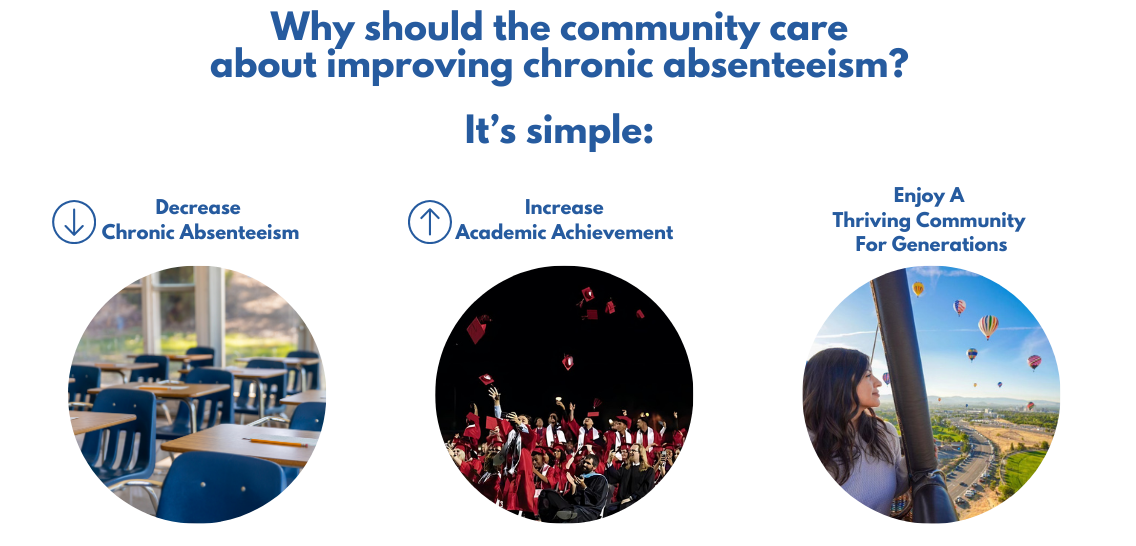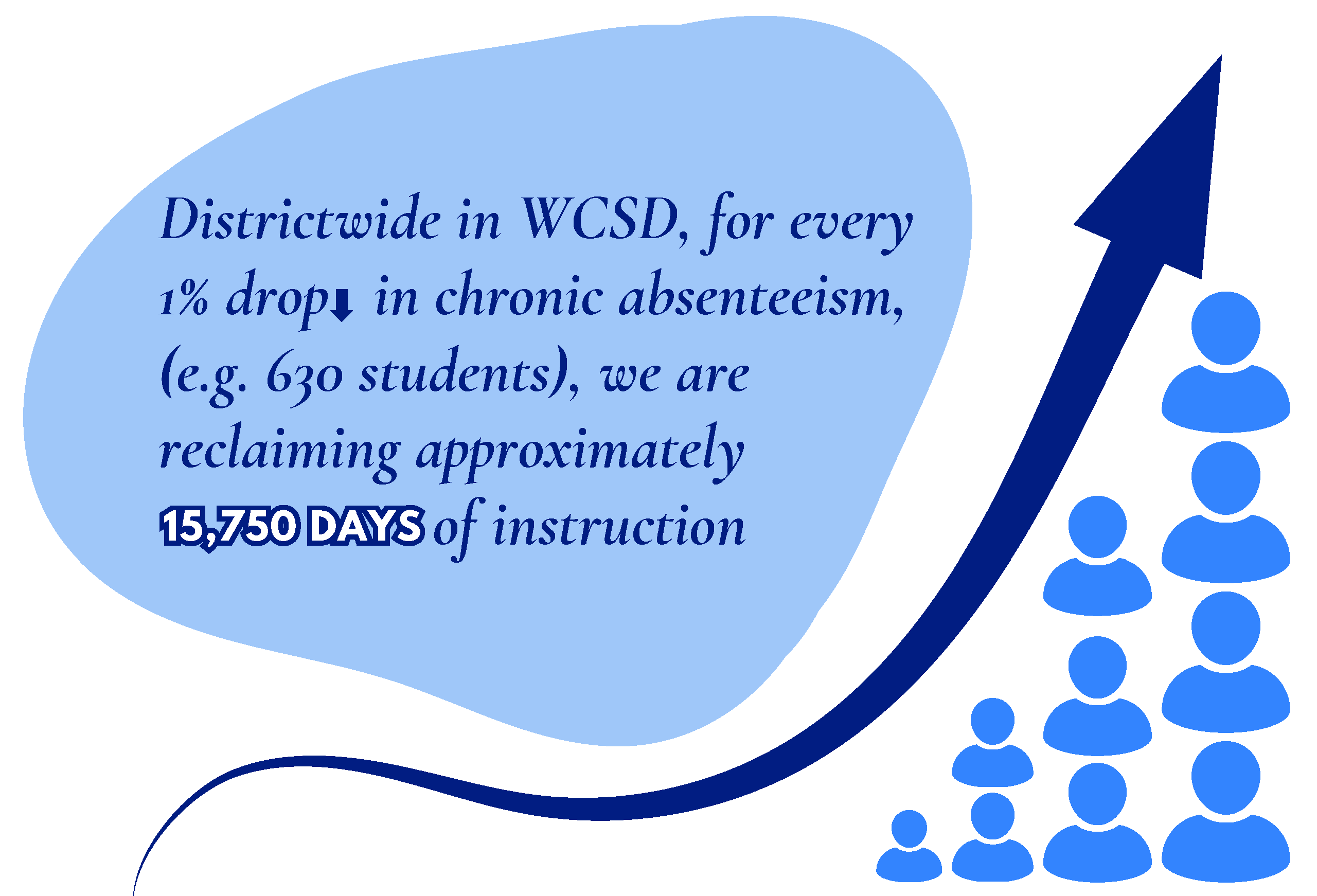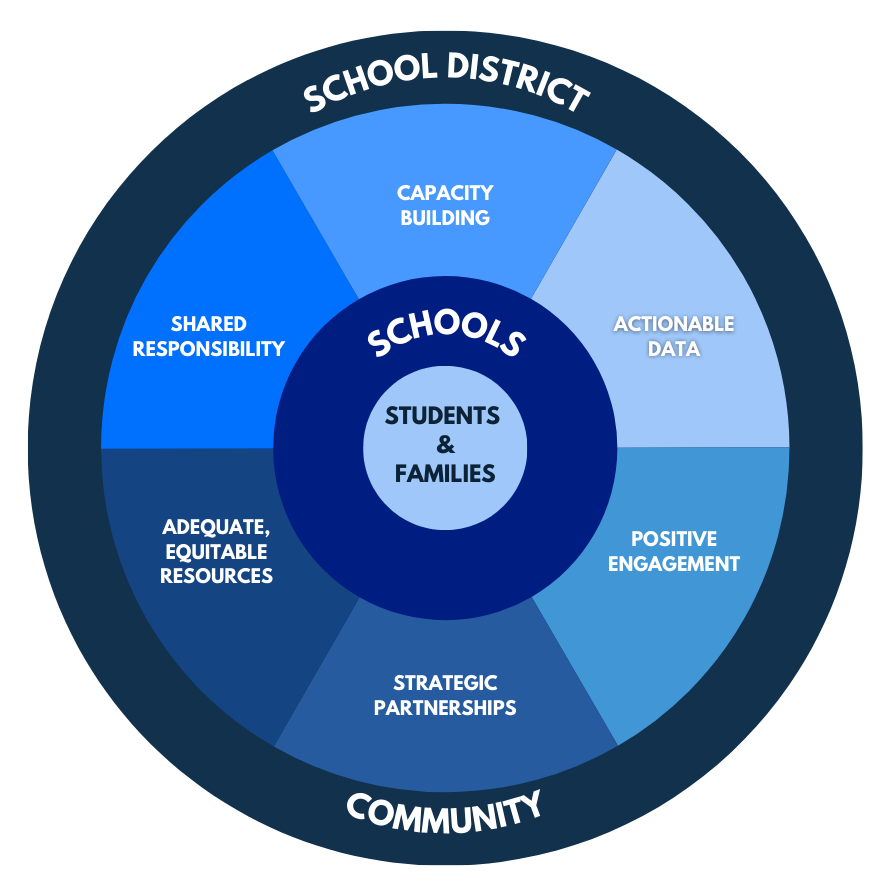WCSD is making strides and improving student attendance! 71% of schools saw attendance gains in the 2024-2025 school year thanks to engagement programs funded by your support.
“I’m Here!” – Helping Washoe County Students Get Back to Class
Chronic Absenteeism: A Fixable Problem
Every day, chronic absenteeism prevents thousands of Washoe County students from gaining a solid footing on their lives. Defined as missing 10% or more of the school year, chronic absenteeism disrupts a child’s chance to learn, grow, and connect simply because they’re involuntarily missing school.
“I’m Here!” Puts Resources Into Results
Thanks to proven strategies and community support, the Washoe County School District has seen remarkable progress in reversing this trend. Just last school year, district-wide efforts reduced chronic absenteeism by 4%, bringing 2,400 students back to their classrooms.
Students Are Missing School: Why?
- Chronic and acute illness
- Family responsibilities or home situation
- Trauma
- Poor transportation
- Housing and food insecurity
- Inequitable access to needed services
- System involvement
- Lack of predictable schedules for learning
- Lack of access to tech
- Community violence
- Shortage of personalized academic and behavioral supports
- Generalized classroom instruction
- No meaningful relationships to adults in the school (especially given staff shortages)
- Lack of enrichment opportunities
- Failure to earn credits
- Need to work
- Struggling academically and/or behaviorally
- Unwelcoming school climate
- Social and peer challenges
- Anxiety
- Biased disciplinary and suspension practices
- Undiagnosed disability and/or disability accommodations
- Caregivers had negative educational experiences
• Absences are only a problem if they are unexcused
• Missing 2 days per month doesn’t affect learning
• Lose track and underestimate
TOTAL absences
• Assume students must stay home for any symptom of illness
• Attendance only matters in the older grades
• Suspensions don’t count as absence
Proven Strategies That Work
Create a culture of attendance by taking a positive approach to absenteeism that is centered on belonging and engagement to help everyone understand why daily attendance matters in PreK-12th grade. Ensure that students – especially those who are chronically absent – benefit from a whole-child approach that includes enrichment activities and addresses health and educational needs.
Researchers found that alerting parents to how many days their children had missed was most effective, reducing total absences by 6 percent and the share of students who were chronically absent by 11 percent when compared to similar students not involved in the study.
A recent report by America’s Promise Alliance shows that students in our highest need communities typically experience “relationship poverty,” which greatly increases the odds that they will dropout. The research showed that having a caring adult in their lives was a major counter force to dropping out. Having a caring adult in school had the largest impact of all – reducing the likelihood of leaving school by 25%.
These efforts are already succeeding, and not just in Washoe County. School districts around the country are experiencing outstanding results after putting similar positive programs into place. The Education Alliance of Washoe County is committed to helping our district’s teachers, principals and administrators welcome kids back to school daily. Contribute to “I’m Here!” and help a student get back to class.




Chronic absenteeism is a complex issue being tackled by school districts, communities, researchers, and organizations across the country. We know from other regions that when education is not a community priority, the impacts are long-lasting and costly. The average high school dropout costs society more than $800,000 over the course of their lifetime: The Center For American Progress, The High Cost of Truancy. Partnering and learning from others' approaches will strengthen our efforts. Listed below are resources, research, and reports both local to Washoe County and nationwide.
- WCSD Family Attendance Resources
- 9/2024 WCSD BOT Chronic Absenteeism Agenda Item
- 9/2024 WCSD BOT Chronic Absenteeism Presentation
- WCSD’s Comprehensive Plan to Address Chronic Absenteeism
- Strengthen Our Community Presentation
- RGJ Article: Washoe’s chronic absenteeism crisis — and what we can do about it
- RGJ Article: Family Resource Centers (FRC) A Lifeline to Our Neighbors in Need



